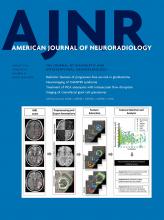The demand for radiology residency positions varies from year to year. Such demand may be affected by several factors such as job market forces, advancements in technology (artificial intelligence, new modalities, and noninvasive treatments),1 and the growing use of remote telemedicine solutions. The coronavirus disease 2019 (COVID) pandemic has disproportionately affected those specialties with direct face-to-face patient care (eg, internal medicine, emergency medicine, family medicine, pediatrics) over such specialties as radiology, whose practitioners may be able to conduct nearly all of their work via remote practice. We analyzed the data of the 2021 and 2022 National Resident Matching Program (NRMP) (COVID years), comparing diagnostic radiology versus other specialties, and those years from 2018 to 2020. We also studied the Neuroradiology Fellowship match statistics from 2018 to 2022. We hypothesized the following: 1) Radiology remains a highly sought-after specialty, 2) its competitiveness for positions is in the top tier of residency specialty programs, and 3) the changes in match results during the pandemic years of 2021 and 2022 would be minimal.
We used the online “Advanced-Data Tables for 2022 Match” and the “Results and Data of the 1998–2021 Main Residency Match” from the NRMP archives of the 2018–2022 residency match2 to compare radiology applicant numbers and match rates with other specialties. We included all fields of medicine that had >1000 applicants to the specialty. The definition of the match success in this study was a match to the preferred specialty that was the applicant’s first-ranked program. Matching to another specialty or failure to match at any slots was considered a lack of success in the match according to the analysis algorithm of the NRMP. Success rates were determined by dividing the number that matched according to their specialty preferences by the number of applicants applying.2,3
For all applicants in 2022, radiology was the ninth most popular specialty after internal medicine, family medicine, pediatrics, emergency medicine, general surgery, psychiatry, anesthesiology, and obstetrics-gynecology (Table).2 This finding remained true each year from 2018 to 2022, for both US Medical Doctor seniors (USMDs) and US Doctor of Osteopathy seniors (USDOs). Radiology had the highest rate of increased applications (20%) of all specialties between 2020 and 2022.2,3 For USMD and USDO students, radiology was the most competitive specialty in 2022 with the lowest successful match rates (64.5% and 45.1%, respectively). From 2018 to 2021, radiology ranked between the second and fourth most competitive specialty.2 International medical graduates (IMGs) accounted for 9.1% (91/996) of successful matches in radiology in 2022, down from 13.0% in 2021.
Popularity ranking (by number of applicants) of specialties with >1000 applicantsa
From 2018 to 2021, the number of positions offered in neuroradiology increased from 241 to 285, with successful matches increasing from 163 (67.6%) to 226 (79.3%), respectively.4 While the percentage of USMDs filling neuroradiology slots decreased from 78.5% to 61.9% during that time, the percentage rebounded in 2022 to 69.7% (168/241 filled).4 The percentage of 2022 neuroradiology-matched positions filled by IMGs was 20.3% (49/241). These IMG rates are much higher than those seen in diagnostic radiology year to year. Neuroradiology remained the most sought-after specialty in the radiology fellowship match from 2018 to 2022. We conclude that radiology remains in the upper echelon of preferred fields of medicine and was the most competitive field to enter in 2022. During the COVID years, applications to radiology have surged. This has resulted in more USMD acceptances in radiology residencies. Overall, neuroradiology remains the most popular radiology subspecialty and has seen a higher rate of IMGs entering the field across time, peaking in 2021.
Footnotes
Disclosure forms provided by the authors are available with the full text and PDF of this article at www.ajnr.org.
- © 2022 by American Journal of Neuroradiology







